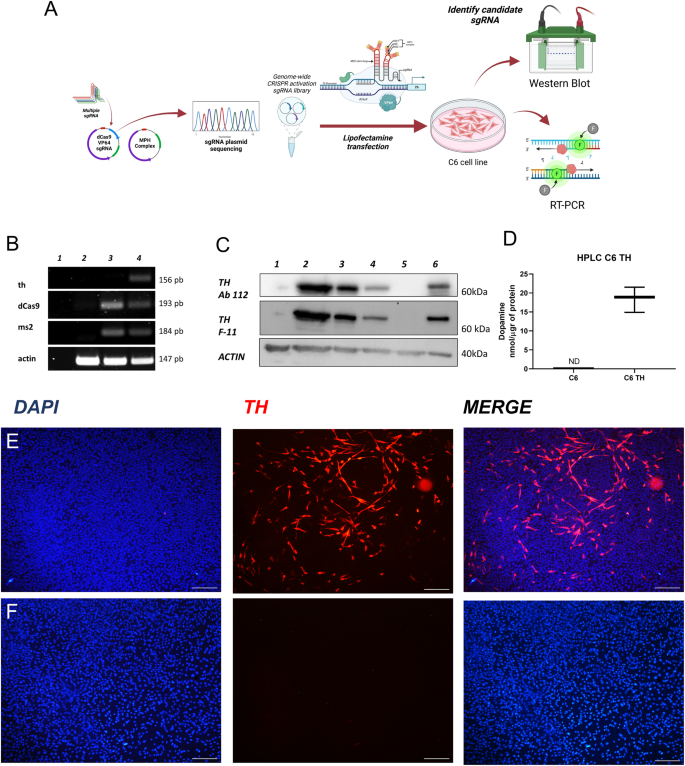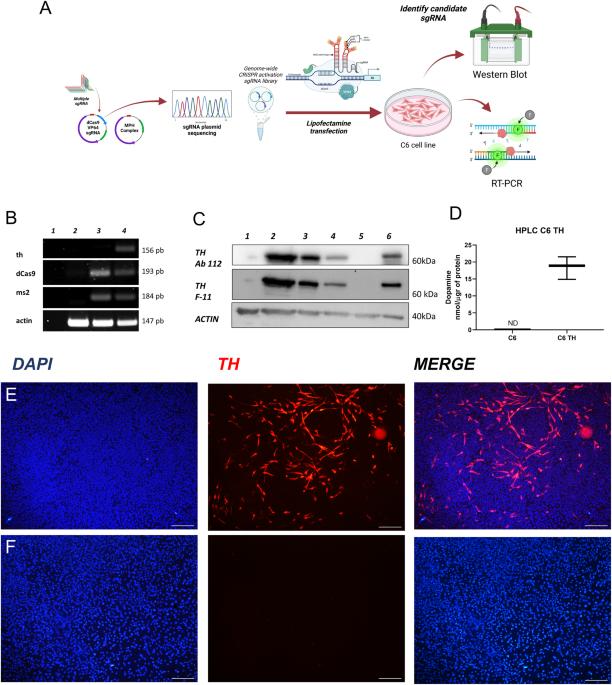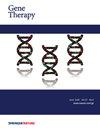CRISPR/sgRNA定向协同激活介质(SAM)作为帕金森病的治疗工具。
IF 4.6
3区 医学
Q1 BIOCHEMISTRY & MOLECULAR BIOLOGY
引用次数: 0
摘要
帕金森病(PD)是第二大神经退行性疾病,不同的基因治疗策略已被用作实验性治疗。作为治疗帕金森病的概念验证,我们利用CRISPR基因激活系统SAM激活星形胶质细胞的内源性酪氨酸羟化酶基因(th),从而在6-OHDA缺失大鼠的纹状体中产生多巴胺(DA)。我们测试了大鼠th启动子区域内的潜在sgRNA,并测定了C6神经胶质细胞系中Th蛋白的表达。利用伪慢病毒,将 SAM 复合物和选定的 sgRNA 转入大鼠星形胶质细胞培养物中,并确定了基因表达和 Th 蛋白合成情况;此外,还通过 HPLC 测定了培养液中 DA 的释放情况。将产生 DA 的星形胶质细胞植入 6-OHDA 偏帕金森病大鼠的纹状体。与接受不产生 DA 的星形胶质细胞的病变大鼠相比,我们观察到接受 DA 星形胶质细胞的病变大鼠的运动行为有所改善。我们的数据表明,SAM 诱导的星形胶质细胞内源性 th 基因的表达可以产生产生 DA 的星形胶质细胞,从而有效减少病变引起的运动不对称。本文章由计算机程序翻译,如有差异,请以英文原文为准。


CRISPR/sgRNA-directed synergistic activation mediator (SAM) as a therapeutic tool for Parkinson´s disease
Parkinson`s disease (PD) is the second most prevalent neurodegenerative disease, and different gene therapy strategies have been used as experimental treatments. As a proof-of-concept for the treatment of PD, we used SAM, a CRISPR gene activation system, to activate the endogenous tyrosine hydroxylase gene (th) of astrocytes to produce dopamine (DA) in the striatum of 6-OHDA-lesioned rats. Potential sgRNAs within the rat th promoter region were tested, and the expression of the Th protein was determined in the C6 glial cell line. Employing pseudo-lentivirus, the SAM complex and the selected sgRNA were transferred into cultures of rat astrocytes, and gene expression and Th protein synthesis were ascertained; furthermore, DA release into the culture medium was determined by HPLC. The DA-producing astrocytes were implanted into the striatum of 6-OHDA hemiparkinsonian rats. We observed motor behavior improvement in the lesioned rats that received DA-astrocytes compared to lesioned rats receiving astrocytes that did not produce DA. Our data indicate that the SAM-induced expression of the astrocyte´s endogenous th gene can generate DA-producing astrocytes that effectively reduce the motor asymmetry induced by the lesion.
求助全文
通过发布文献求助,成功后即可免费获取论文全文。
去求助
来源期刊

Gene Therapy
医学-生化与分子生物学
CiteScore
9.70
自引率
2.00%
发文量
67
审稿时长
4-8 weeks
期刊介绍:
Gene Therapy covers both the research and clinical applications of novel therapeutic techniques based on a genetic component. Over the last few decades, significant advances in technologies ranging from identifying novel genetic targets that cause disease through to clinical studies, which show therapeutic benefit, have elevated this multidisciplinary field to the forefront of modern medicine.
 求助内容:
求助内容: 应助结果提醒方式:
应助结果提醒方式:


